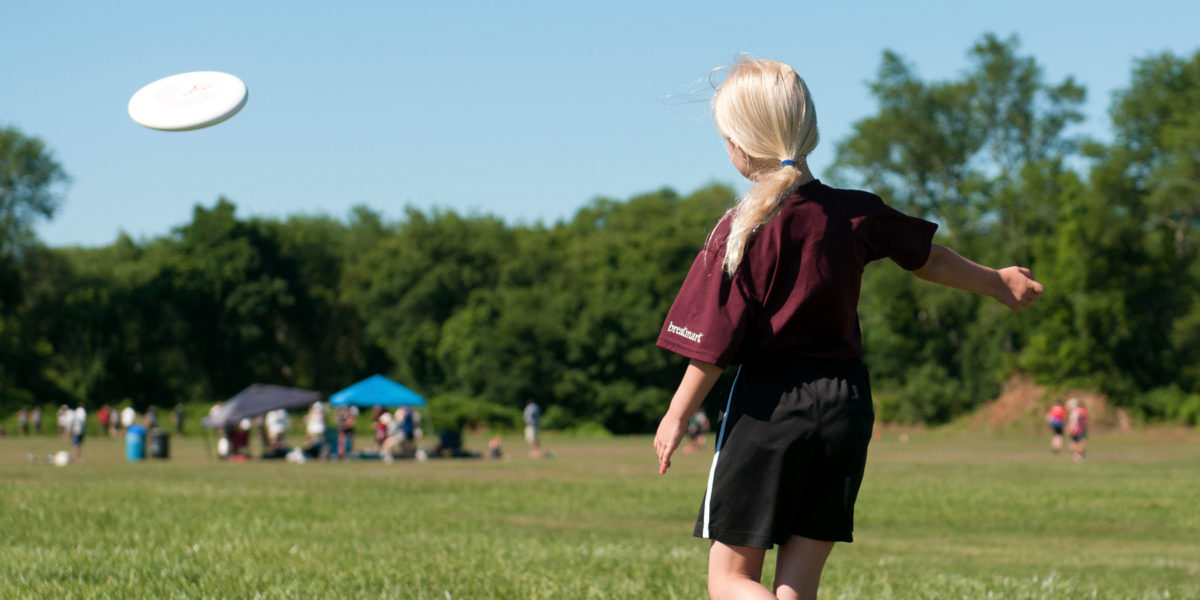 Jolie Lang - UltiPhotos.com
Jolie Lang - UltiPhotos.com
Last week, a set of ultimate players calling themselves the Gender Equity Action Group wrote a letter declaring a list of beliefs and asking for an immediate response from USA Ultimate. These stated beliefs centered on equitable broadcast coverage of women’s and mixed ultimate. While I thoroughly support that mission, I think its focus on the media slightly obscures our community’s larger issue with gender equality. I’m writing this to clarify that issue, and to talk about how the GEAG letter presents only one small part of a much larger effort we can all make to increase female participation in ultimate.
This past weekend I played in a club women’s regional championship tournament. The seven-team format was awkward. The two teams that were expected to qualify for nationals did so easily, with no real threat of losing the bids they’d earned. Meanwhile, in both the men’s and mixed divisions, upsets ruled the day, bids were won on double game point, and excitement ran high.
Our region was not alone in this – with the exception of the Northwest and Northeast regions, across the country there were no truly competitive women’s regional tournaments. The favorites won handily, the bid allocations went mostly as expected, and few important games were decided by less than three points.
To achieve gender equality in ultimate, I believe we need to aim for more than just broadcast rights and highlight videos. We need to aim for improvement in participation and coaching across all levels of women’s ultimate. We need women’s sectional tournaments to actually eliminate teams, we need regional tournaments to have 16 teams, and we need increased parity in skill level between teams at those tournaments.
USA Ultimate already stipulates that broadcast games cover the women’s and men’s divisions equally, though it is certainly true that men’s games have always been scheduled at more “favorable” or “primetime” slots. Asking the organization to change this is a good, and necessary, move – women’s and mixed games absolutely deserve that spotlight as well.
However, it’s easy to read the GEAG statement (or watch the All-Star Ultimate Tour) and think that high-level equitable media coverage is all USA Ultimate must commit to in order to increase female participation. There is so much more that can be done at the grassroots level to make that coverage worthwhile. What the GEAG letter fails to emphasize is that media coverage of women is just one of many tools USA Ultimate must use to encourage growth.
Watching coverage of incredible female athletes makes girls excited about and willing to try the sport. But what happens after that? It is well documented that the attrition rate for teenage girls in sports is significantly higher than (even double, according to the Women’s Sports Foundation) that of teenage boys. Seeing women play their sport will provide these young girls with some role models and some impulse, but little support system for their daily lives – they’ll still need help with logistics and time management for getting to practice, possibly with experiencing stigma from their peers, and with handling potentially difficult team dynamics.
The female role models who emerge from USA Ultimate’s increased media coverage will have more authority to speak on the state of our sport, and a platform with which to emphasize the importance of developing girls’ and young women’s ultimate. These women must use their broadcast recognition to encourage USA Ultimate members to participate in grassroots efforts like the Girls’ Ultimate Movement (GUM), or by asking elite ultimate players to devote time to coaching girls. They can encourage the growth of supportive local groups that will not only recruit young women, but also keep them in the sport. More media coverage is a good step toward equal female participation in ultimate, but it must be combined with greater attention to increasing and maintaining membership.
As it prioritizes broadcast changes in ultimate, I suggest that USA Ultimate also prioritize knowledge of and participation in its many grant and support programs (most of which I did not know about until just now). In addition to the highly-publicized GUM, there are coaching rebates, grants for new teams, a team development manual, and a new ACE program that “provide[s] incentives and recognize[s] growth and sustainability of college ultimate programs.” Publicizing these programs with short ads or with announcer commentary during broadcast games would vastly increase participation in them – and increase the number of new teams and coaches across the country. To continue the work that broadcast ultimate does in bringing attention to women’s ultimate, USA Ultimate and team organizers must devote money and time to building and promoting these incentive programs.
Much of the change will have to be grassroots. We elite players need to encourage girls to pick up and stick with ultimate. We need to provide clinics, support, and even coach girls’ programs at all levels of the sport. We need to form personal relationships with girls who are wavering about whether or not to continue playing. We need to show them how powerful a group of women can be, how empowering it is to improve and grow confidence in a sport, and how meaningful it is to have something like the ultimate community in one’s life. I am grateful to the GEAG for formalizing this conversation in its recent belief statement, but the efforts to promote women’s and mixed ultimate need much more than just increased media coverage. USA Ultimate and its members have to focus on recruiting, retaining, and encouraging girls to grow with the sport.









Comments Policy: At Skyd, we value all legitimate contributions to the discussion of ultimate. However, please ensure your input is respectful. Hateful, slanderous, or disrespectful comments will be deleted. For grammatical, factual, and typographic errors, instead of leaving a comment, please e-mail our editors directly at editors [at] skydmagazine.com.